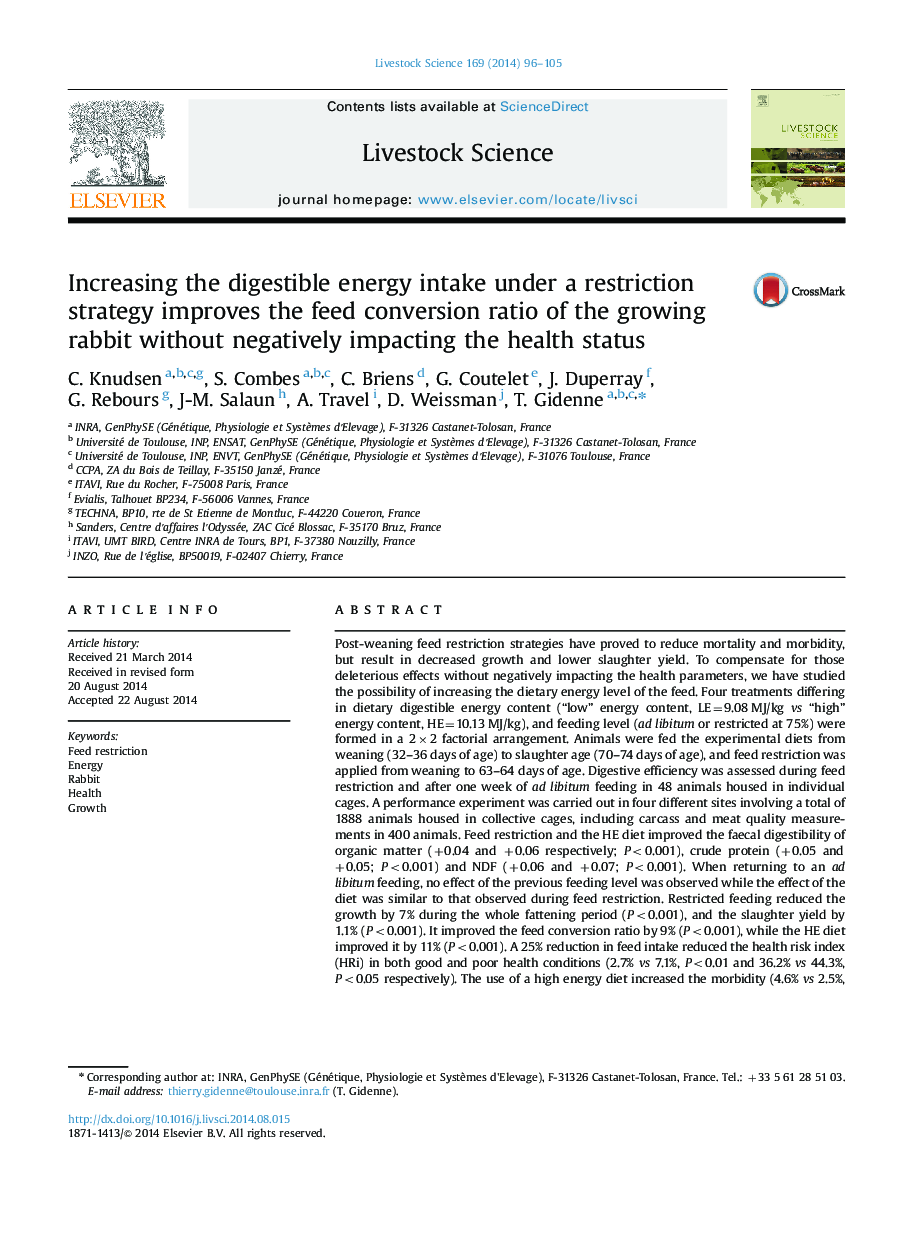| کد مقاله | کد نشریه | سال انتشار | مقاله انگلیسی | نسخه تمام متن |
|---|---|---|---|---|
| 5790137 | 1553963 | 2014 | 10 صفحه PDF | دانلود رایگان |
عنوان انگلیسی مقاله ISI
Increasing the digestible energy intake under a restriction strategy improves the feed conversion ratio of the growing rabbit without negatively impacting the health status
ترجمه فارسی عنوان
افزایش مصرف انرژی قابل هضم تحت یک استراتژی محدود کننده، میزان تبدیل خوراک خرگوش در حال رشد را بدون تأثیر منفی وضعیت سلامتی بهبود می بخشد
دانلود مقاله + سفارش ترجمه
دانلود مقاله ISI انگلیسی
رایگان برای ایرانیان
کلمات کلیدی
محدودیت خوراک، انرژی، خرگوش، سلامتی، رشد
موضوعات مرتبط
علوم زیستی و بیوفناوری
علوم کشاورزی و بیولوژیک
علوم دامی و جانورشناسی
چکیده انگلیسی
Post-weaning feed restriction strategies have proved to reduce mortality and morbidity, but result in decreased growth and lower slaughter yield. To compensate for those deleterious effects without negatively impacting the health parameters, we have studied the possibility of increasing the dietary energy level of the feed. Four treatments differing in dietary digestible energy content (“low” energy content, LE=9.08 MJ/kg vs “high” energy content, HE=10.13 MJ/kg), and feeding level (ad libitum or restricted at 75%) were formed in a 2Ã2 factorial arrangement. Animals were fed the experimental diets from weaning (32-36 days of age) to slaughter age (70-74 days of age), and feed restriction was applied from weaning to 63-64 days of age. Digestive efficiency was assessed during feed restriction and after one week of ad libitum feeding in 48 animals housed in individual cages. A performance experiment was carried out in four different sites involving a total of 1888 animals housed in collective cages, including carcass and meat quality measurements in 400 animals. Feed restriction and the HE diet improved the faecal digestibility of organic matter (+0.04 and +0.06 respectively; P<0.001), crude protein (+0.05 and +0.05; P<0.001) and NDF (+0.06 and +0.07; P<0.001). When returning to an ad libitum feeding, no effect of the previous feeding level was observed while the effect of the diet was similar to that observed during feed restriction. Restricted feeding reduced the growth by 7% during the whole fattening period (P<0.001), and the slaughter yield by 1.1% (P<0.001). It improved the feed conversion ratio by 9% (P<0.001), while the HE diet improved it by 11% (P<0.001). A 25% reduction in feed intake reduced the health risk index (HRi) in both good and poor health conditions (2.7% vs 7.1%, P<0.01 and 36.2% vs 44.3%, P<0.05 respectively). The use of a high energy diet increased the morbidity (4.6% vs 2.5%, P<0.05) in good health conditions and had the opposite effect in poor health conditions (17.5% vs 22.4%). Calculations of the gross margin confirmed the economic advantage of feed restriction in growing rabbits (+0.06 â¬/kg), while the use of a restricted fed high energy diet was profitable only when mortality and morbidity was low.
ناشر
Database: Elsevier - ScienceDirect (ساینس دایرکت)
Journal: Livestock Science - Volume 169, November 2014, Pages 96-105
Journal: Livestock Science - Volume 169, November 2014, Pages 96-105
نویسندگان
C. Knudsen, S. Combes, C. Briens, G. Coutelet, J. Duperray, G. Rebours, J-M. Salaun, A. Travel, D. Weissman, T. Gidenne,
